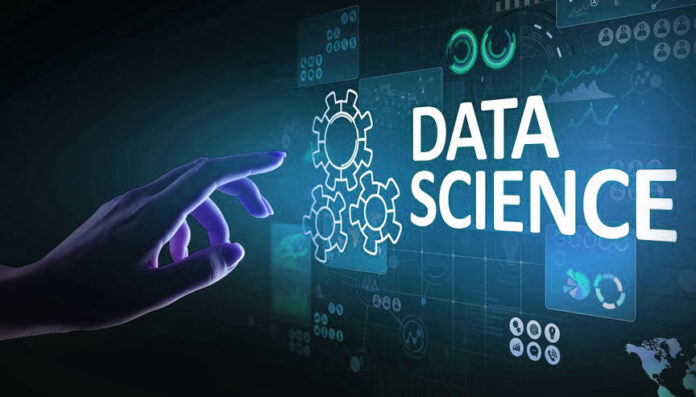
If you’ve always dreamed of becoming a scientist, there’s an exciting career path that combines biology and data science. Rapid technological advancements have blurred the lines between IT and biotechnology, creating vast opportunities for life science graduates. This guide will walk you through the essential steps to becoming a data scientist in biology, highlighting necessary skills, career opportunities, and industries that are actively hiring.
What is Data Science in Biology?
Data science is an interdisciplinary field that merges statistics, computational tools, and biological domain expertise to extract meaningful insights from vast datasets. Every biological experiment generates data, and interpreting that data accurately is crucial for advancements in healthcare, drug discovery, agriculture, and environmental sciences. With artificial intelligence (AI) and machine learning (ML) integration, data science plays an increasingly vital role in life sciences.
Why is Data Science Important for Life Sciences?
Modern biology generates enormous amounts of data, including:
- Genomics and Proteomics Data: DNA sequencing and protein analysis produce vast datasets requiring computational interpretation.
- Clinical Data: Information from clinical trials and patient records must be analyzed to improve treatment outcomes.
- Drug Discovery: Data-driven models optimize drug design and streamline regulatory approvals.
- Precision Medicine: AI-driven predictive analytics improve disease diagnosis and personalized treatment plans.
- Agriculture & Biotechnology: Data analysis aids in genome editing, yield optimization, and sustainable farming.
- Environmental Science: Governments and organizations use data-driven ecosystem modeling to address climate change impacts.
Essential Skills for a Data Scientist in Biology
To succeed in this field, you must develop a strong foundation in the following areas:
a. Programming Skills
- Languages: Python and R are the most widely used programming languages.
- Libraries: Learn essential libraries for data manipulation and analysis, such as Pandas, NumPy, SciPy, and BioPython.
b. Statistical and Mathematical Skills
- A strong foundation in statistics is crucial for data interpretation.
- Basic understanding of regression modeling, classification, and clustering techniques.
- Logical reasoning and problem-solving aptitude are key.
c. Data Visualization
- Tools like Matplotlib, Seaborn, and Power BI help present data insights effectively.
d. Machine Learning and AI
- Understanding ML algorithms to detect patterns in biological data.
- Application of AI in genomics, drug discovery, and disease diagnosis.
e. Bioinformatics Tools
- Familiarity with tools like BLAST, Bioconductor, Cytoscape, and genome browsers.
How to Start Your Career in Data Science for Biology
Step 1: Learn the Basics of Programming and Data Science
- Take beginner courses in Python and R.
- Enroll in bioinformatics and AI/ML courses.
Step 2: Gain Domain Expertise in Biology
- Strengthen your knowledge in genomics, proteomics, metabolomics, transcriptomics, and drug discovery.
Step 3: Develop Data Handling and Visualization Skills
- Practice handling biological datasets from repositories like NCBI, EMBL, and GEO.
- Use Python and R to analyze and visualize biological data.
Step 4: Learn Machine Learning Basics
- Understand how ML algorithms can predict biological outcomes.
- Apply AI in cancer detection, disease diagnostics, and drug modeling.
Step 5: Build Your Portfolio
- Publish research papers in bioinformatics and ML applications in biology.
- Work on small projects and internships to gain hands-on experience.
- Participate in bioinformatics competitions and contribute to open-source projects.
Career Opportunities in Biological Data Science
Upon gaining expertise, various career paths become available:
- Bioinformatics Analyst
- Clinical Data Analyst/Manager
- Biostatistician
- AI/ML Associate in Healthcare
- Data Scientist in Pharmaceutical and Biotech Companies
Industries Hiring Data Scientists in Biology
- Pharmaceutical Companies (e.g., Pfizer, Novartis)
- Research Labs and CROs (Contract Research Organizations)
- Hospitals and Precision Medicine Startups (e.g., Aragen, UCD Data)
- Agri-Biotech Firms (Genome editing, crop optimization)
- Environmental Analytics Companies (Climate change modeling, pollution control)
How Long Does It Take to Become a Data Scientist in Biology?
- 6-9 months to gain expertise through courses and projects.
- 3-6 months to secure a job through networking, internships, and applications.
- Total: Approximately 12 months to transition into a career in biological data science.
Conclusion
The fusion of biology and data science is an exciting frontier with immense career potential. By developing programming, statistics, and AI skills, life science graduates can unlock high-paying roles in pharma, biotech, healthcare, and environmental sciences. Start today by learning Python, mastering biological datasets, and building a strong portfolio to enter this rewarding field.
Are you ready to take the first step? Start learning today and shape the future of biological data science!



















